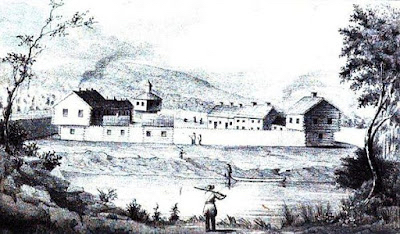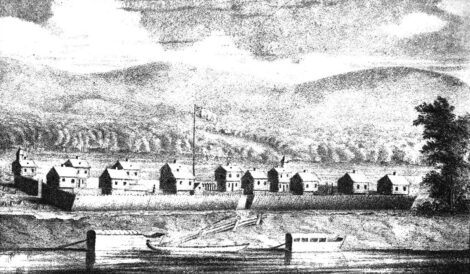MOV Climate Corner: Yes, WE are the problem
I’ve been voraciously consuming content on climate change and related phenomena (books, articles, documentaries, lectures, etc.) for at least the last 10 years, with this month being the 10-year anniversary of the founding of Mid-Ohio Valley Climate Action (MOVCA). MOVCA is the climate and environmental nonprofit I helped found and have helped lead, which has been submitting climate corner content weekly since March of 2021. As I write, I’ve just finished reading maybe the most important book I’ve ever picked up on climate and related subjects.
“The Story of CO2 Is the Story of Everything: How Carbon Dioxide Made Our World,” by Peter Brannen, is a work described on its cover by NYT bestselling author David Wallace-Wells as “moving and magisterial.” I couldn’t hope to provide a more accurate description. Brannen offers a 450-page exploration of Earth’s 4.5 billion years of epochs and eons, bringing the reader along from our planet’s origins to the modern industrialized age. It’s brilliant and meticulous, yet readily accessible to laypersons like me who are not scientists like geophysicists, geologists or climatologists.
“Today, humanity produces more CO2 than all the other substances we produce on Earth combined,” says Brannen. “It is our signature product. From a planetary perspective, human society is now, above all else, a conduit for moving carbon in the crust into the atmosphere. CO2 is what we make. It’s the exhausted end product of an industrial respiration that is busy metabolizing all of Earth history in order to transform as much of the planet’s surface as possible into more human civilization.”
Brannen doesn’t mince words about where viable solutions to the anthropogenic climate crisis are to be found. “Human institutions are now dominant components of the global carbon cycle, and the answers to climate change are not to be found in the realm of atmospheric physics or geochemistry,” Brannen says. “They are political and economic. Just as a string of DNA is useless when it’s unmoored from the energetic powerhouse of a cell, a dire climate report detached from the levers of geopolitical and economic power is similarly inert.”
Put simply, we’re the problem and we have to find the solutions. We can’t sit back and decide that the will of a deity or deities will be done one way or another. We can’t rely on the so-called “invisible hand of the market” to provide magical corrections. While individual and household actions matter, inspire others to action and add up, it is going to take truly global cooperation on policy, investment and divestment to make the course corrections necessary to decarbonize on the timescales our current trajectory demands.
The fossil fuels industries, especially the oil industry, have understood the massive carbon cycle disruptions their products cause since at least the 1950s. They only worked to make climate science controversial to protect their profits when they recognized the inconvenient truth of powering modernity with coal, oil and gas: it comes at a highly destabilizing, potentially existential cost. It’s not sustainable on a finite planet and it’s not going to take millennia to have to pay the Piper.
We’re not going to be able to address this crisis in a last-ditch effort like a college freshman who spends all semester drinking and partying and crams for the big exams at the last minute. A D- here would mean parts of Earth are uninhabitable and potentially billions of lives, not just human, are lost. Carbon capture and sequestration or storage is not a viable solution, short-term or long. All the carbon sinks on the planet (e.g., trees, soils, wetlands, weathering rocks) aren’t going to draw down the excess CO2 nearly fast enough, especially with humans continuing to emit 40 gigatons of CO2 and another 11 to 12 gigatons of other greenhouse gases annually (1 gigaton = 1 billion metric tons).
So, what can we do? It’s going to take mass, rapid deployment of renewable energies with various storage and delivery options to solve for intermittency; maximized energy and resource efficiencies and conservation (efficiency and conservation are two different concepts); sustainable agriculture and development; deployment of hydrogen extracted directly from Earth or by splitting water molecules using electrolysis powered by renewables to decarbonize sectors like steel and cement-making, aviation and international shipping, and more.
No one said it would be easy. Life never has been. It made sense to go from powering life with human and animal metabolism, to the burning of external biomass like wood, to going beneath the surface to release hundreds of millions of years of fossilized solar energy, turning organic carbon into C02, water and usable power at the oxygen-rich surface. Now, it makes sense to use some of the materials and knowledge we gained and synthesized from all that fossil use to meet our ever-rising energy needs in renewable, sustainable ways, while also reducing our overall energy demand.
We can do so without sacrificing reasonable quantity or quality of life (“reasonable” quantity and quality of life does not include private jets, yachts or enormous homes on multiple continents bought with hoarded wealth, nor does it include massive AI or cryptocurrency deployment).
Trillion dollar “defense” budgets, inhumanly cruel and xenophobic anti-immigration efforts and an authoritarian police state in the making all stem, in part, from the failure of our society to take the climate crisis seriously. Understanding of the past, as Peter Brannen’s book provides, is what will enable us to act now to secure a future of peace and stability.
Engle is board president of Mid-Ohio Valley Climate Action.



